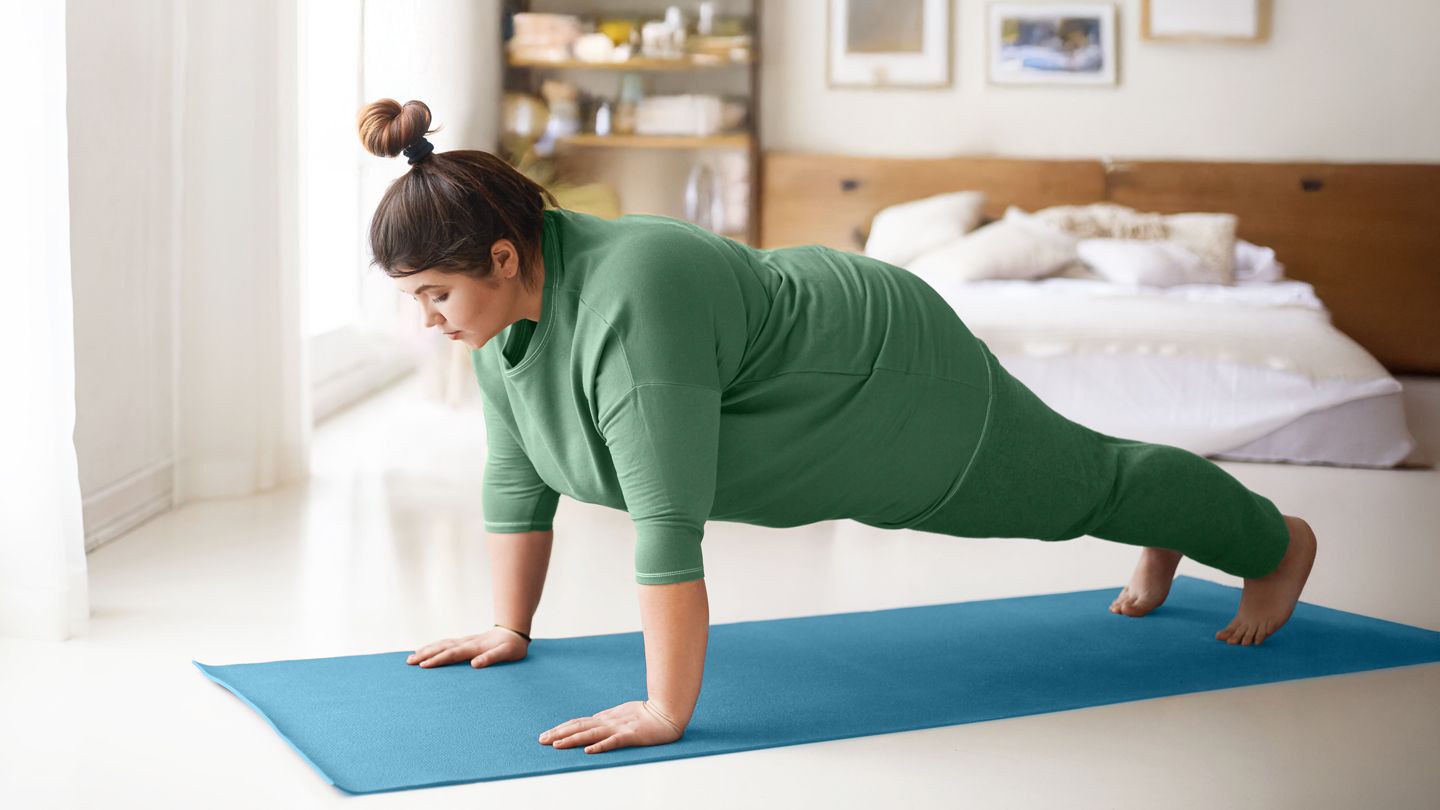Yoga and Strength
The current physical activity guidelines from the U.S. Department of Health and Human Services (HHS) recommend strength training twice a week for optimal health. While gentler, more restorative forms of yoga won’t necessarily count toward that quota, more strenuous practices that emphasize strength-building poses can help support this goal.
“More advanced styles of yoga like power yoga and ashtanga work your muscles more than gentler styles,” says Thomas. Hatha yoga, while typically slower, may also help build strength, according to a study published in Scientific Reports in 2025.
Yoga poses primarily challenge your muscles by having you hold your body in a fixed position, creating what’s known as isometric contractions, according to Mayo Clinic. This type of exercise creates muscle tension without changing a muscle’s length or visibly moving a joint.
“In my classes, I tend to hold the warrior and crescent lunge poses for 10 to 15 breaths precisely to build isometric strength,” says Warloski.
While isometric exercises won’t help you improve speed or athletic performance, they can enhance joint stability. The greater your stability, the better your joints are able to stay in place during daily activities and exercise, preventing potential pain and injury.
Strength gains take time. “Like any program, yoga generally takes four to eight weeks to bring significant results if you’re consistent with three days a week of practice,” says Warloski. “I have yoga clients tell me they feel looser within a few classes, but to really see strength benefits, you need some time.”
Great strength-building yoga poses include plank, chaturanga (yoga push-up), navasana (boat pose), utkatasana (chair pose), utthita parsvakonasana (extended side angle), and any of the three warrior poses, says Meggan Berg, a certified personal trainer and yoga instructor at Life Time in Virginia.
You may notice that challenging yoga poses start to feel easier within a few weeks. But according to Len Kravitz, PhD, CSCS,, an exercise science professor at the University of New Mexico in Albuquerque, short-term adaptations in strength within the first few weeks are actually a result of neural adaptations in your body, meaning your body is learning to work smarter as you push harder. Dr. Kravitz explains that it usually takes about 16 workouts for real strength adaptations to kick in.
Read the full article here




